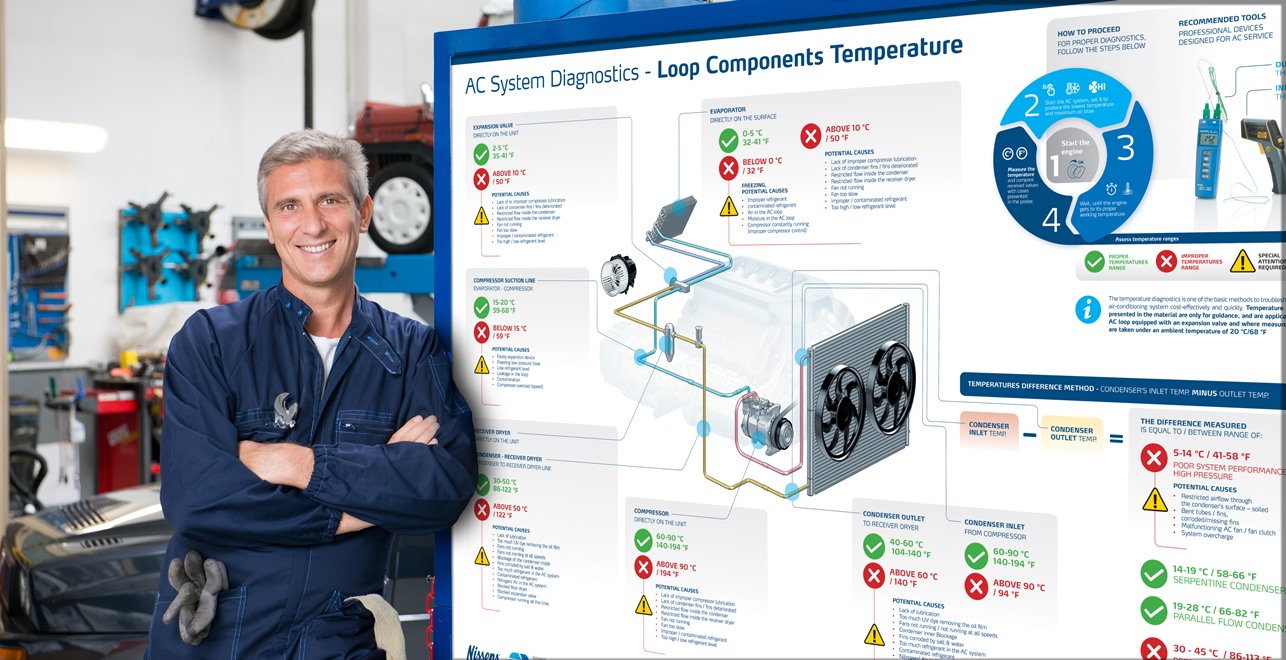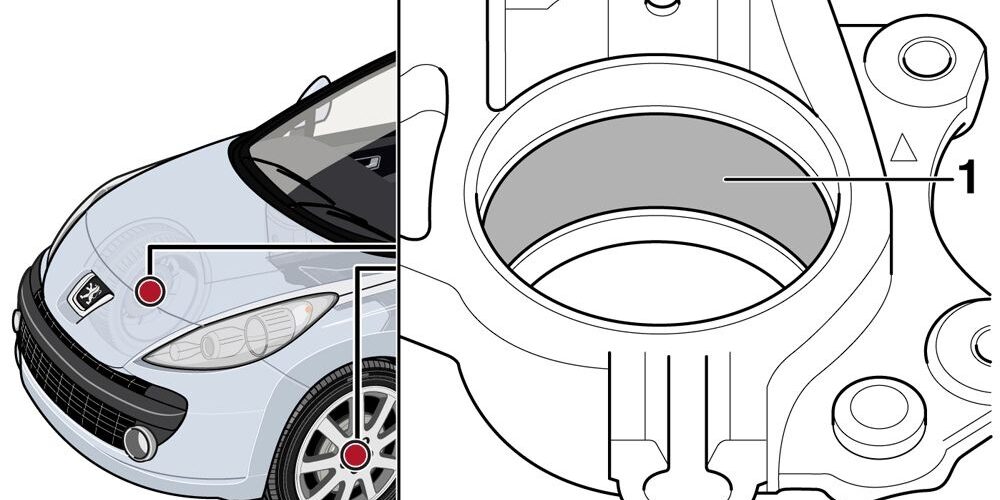Too Hot or Too Cold – Temperature Diagnostics of the Air Conditioning System
One of the simple methods of diagnosing the air conditioning system is to measure temperatures at different points of the system. Thanks to the ability to diagnose the system based on temperatures, a mechanic can discover problems that have occurred in the car at a low cost and relatively quickly.

An example method of temperature diagnostics of the air conditioning system is to check the temperature differences between the temperature of the pipe at the entrance to the condenser (air conditioning radiator) and the temperature of the pipe at the exit from the condenser, and then compare this difference with the diagram of the system’s operating temperatures according to the car manufacturer.
When customers leave cars in the service, they often do not know the specific cause of the problem. They know that the air conditioning system is not working properly, but they do not know why. Nissens trains mechanics in the field of air conditioning system diagnostics, including effective temperature diagnostics, so that the service can quickly and at a relatively low cost discover and repair a failure of the air conditioning system. A quickly and efficiently served customer is a satisfied customer who will return to the workshop. – said Michael Ingvardsen, Training Manager at Nissens and air conditioning specialist.
Typical problems
Discrepancies in temperatures in different points of the air conditioning system in a damaged car compared to temperatures in a properly functioning system can be due to many reasons. Examples of causes that cause deviations in the system’s operating temperatures are:
- restricted airflow through the condenser or evaporator
- corroded condenser, with fins falling out
- faulty or improperly working radiator fan
- malfunctioning valves
- leak in the air conditioning system and a loss of refrigerant
- lack of lubrication
- blocked or restricted flow of refrigerant in the system.
An example of temperature diagnostics is the measurement of the evaporator temperature. Temperatures below zero and frost on the evaporator indicate a problem with the system, such as air, moisture, or contaminated refrigerant in the AC system. Checking the evaporator temperature as one of the first activities can save the service a lot of valuable time.

Tips for Mechanics
When a mechanic faces a car with an air conditioning problem, measuring temperatures at various points of the system is a quick and economical method of diagnosing different problems that may affect the functioning of the air conditioning system. Based on the temperature measurements and their further evaluation, one can quickly narrow down the range of possible causes and then through further diagnostic and service activities repair the damage. In each case of intervention and repair of the air conditioning system, Nissens recommends performing a thorough flushing of the system, to remove even old oil and an excess of contrast that might have appeared in the system, not to mention removing solid contaminants from the system.









